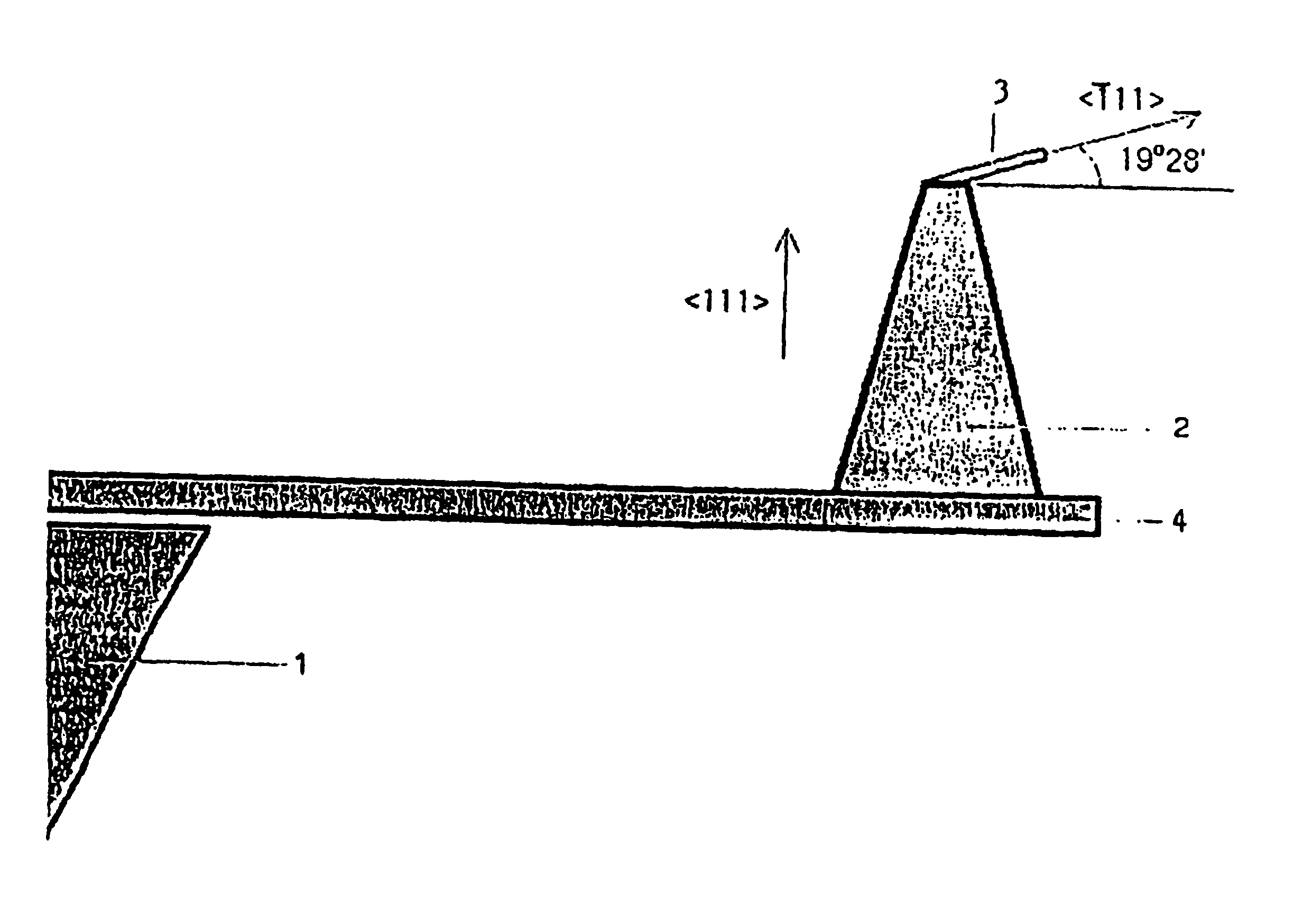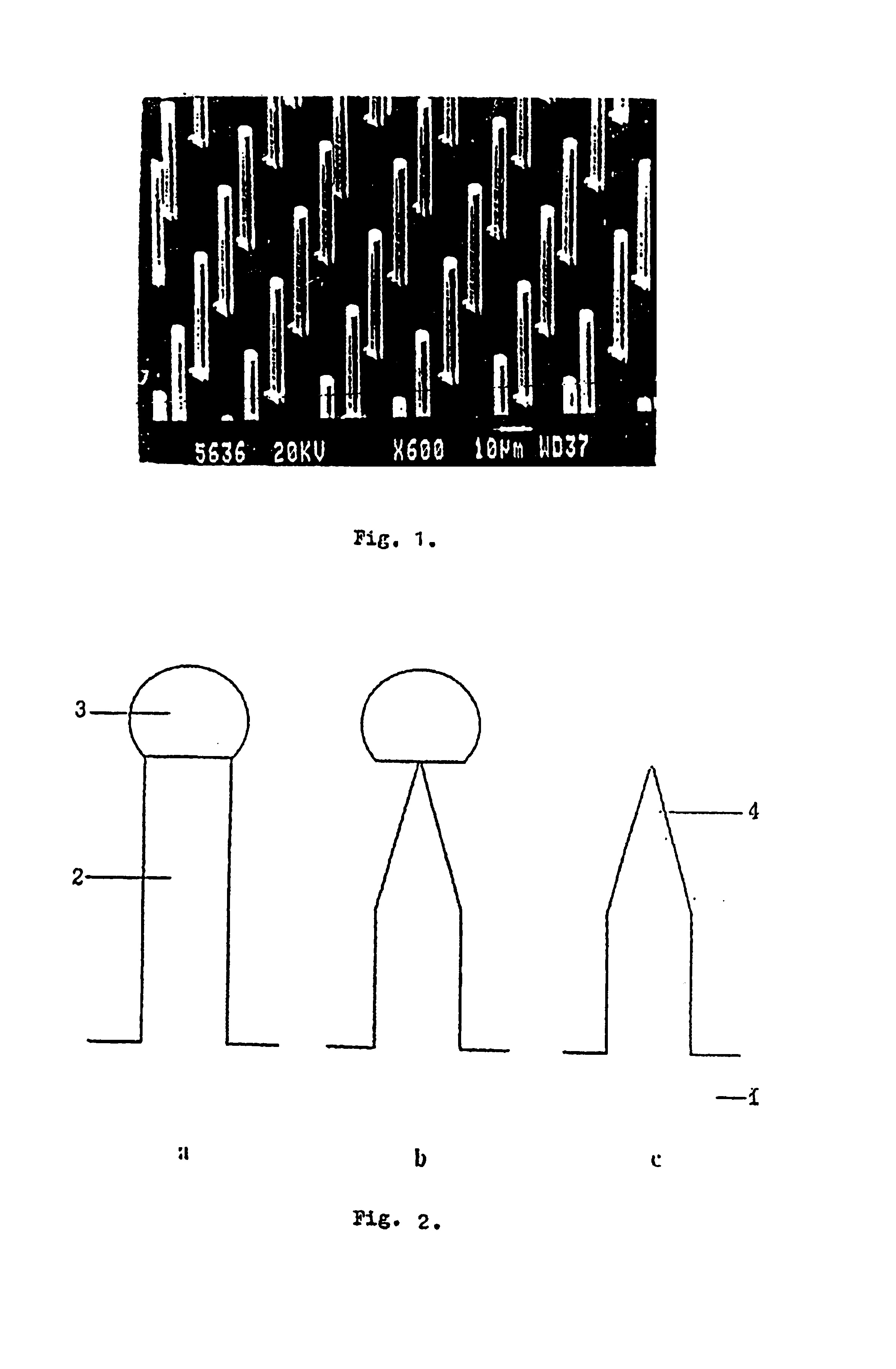Tip structures, devices on their basis, and methods for their preparation
- Summary
- Abstract
- Description
- Claims
- Application Information
AI Technical Summary
Benefits of technology
Problems solved by technology
Method used
Image
Examples
example 1
[0106]A beam of argon or nitrogen ions accelerated by electrostatic field 5 kV is directed along the axis of the probe. A conical particle with an angle 40-50° at its apex is formed, as it is shown in FIG. 12. The conical magnetic particle ensures the resolving power of the MFM about 50 nanometers. Calculation has shown that, at such a design of the probe, a contribution of the magnetic film deposited on the basis of the probe into a signal registered by the SPM is at least 100 times less than that of the conical particle deposited onto the tip.
[0107]The magnetic particle prepared by evaporation and, then, treated by the ion beam bombardment has a polycrystalline structure, each magnetic domen formed in a given crystalline grain having its own (arbitrary) direction of magnetization. In order to improve (homogenize) the magnetic properties of the particle, it is subjected to monodomenization by enduring the magnetic probe at a constant magnetic field of a given direction.
[0108]Exampl...
example 2
[0110]A thin film of titanium is deposited onto the silicon tip having the plateau. Then, the film is oxidized by beating to a high temperature in an oxygen-containing atmosphere. A TiO2 coating is formed on the plateau.
[0111]Other problems that can be solved with the whisker based SPM probes relate to investigations of objects with complicated shapes (such as biological macromolecules, solid surfaces with a course relief, with arbitrary microcavities, etc). For investigations of such objects, a whisker probe having a shape shown in FIG. 15 can be used. The probe consists of at least two parts, a lower one and an upper one. The lower part is formed by a relatively thick silicon whisker perpendicular to a single-crystalline silicon substrate oriented along the most-close-packed crystallographic plane (111) so that it has the orientation . The upper part is formed by another, a more narrow whisker that grows in another, also crystallographic direction that forms the crystallographic a...
example 3
[0116]Silicon whisker is grown by means of a mixture of gold and indium. Accordingly, the solidified globule contains, in addition to silicon, also crystallites of gold and indium. The whisker probe for the chemical force microscopy is coated with an indium film. Owing to the fact that some of indium crystallites of the globule are exposed at its surface, the adhesion of the indium film is enhanced.
[0117]Also, the globule, with the constituent coating or without it, can be coated with various chemical functional groups.
PUM
 Login to View More
Login to View More Abstract
Description
Claims
Application Information
 Login to View More
Login to View More - R&D
- Intellectual Property
- Life Sciences
- Materials
- Tech Scout
- Unparalleled Data Quality
- Higher Quality Content
- 60% Fewer Hallucinations
Browse by: Latest US Patents, China's latest patents, Technical Efficacy Thesaurus, Application Domain, Technology Topic, Popular Technical Reports.
© 2025 PatSnap. All rights reserved.Legal|Privacy policy|Modern Slavery Act Transparency Statement|Sitemap|About US| Contact US: help@patsnap.com



